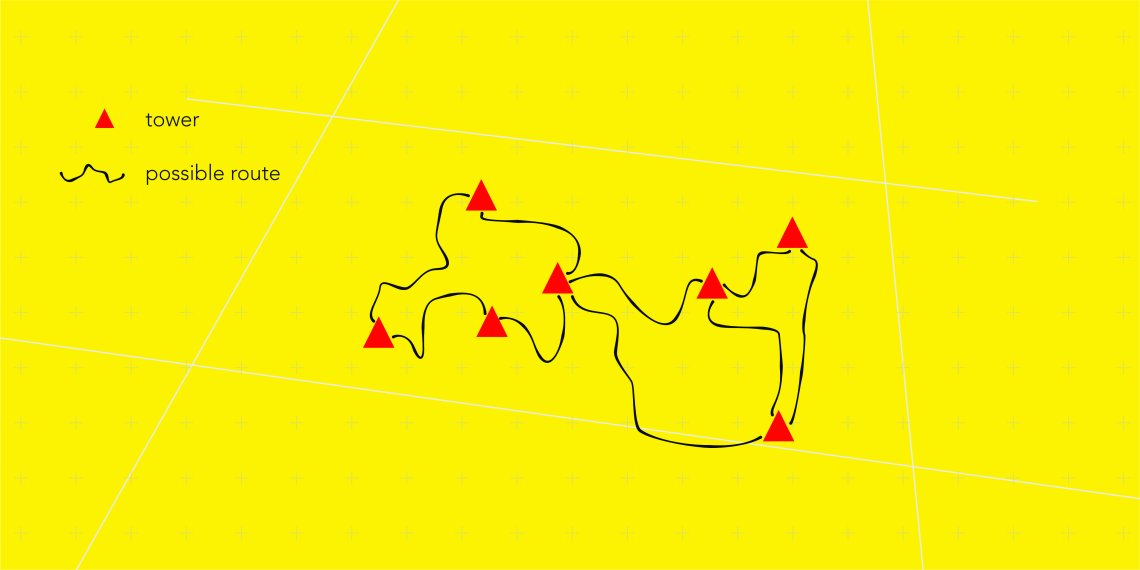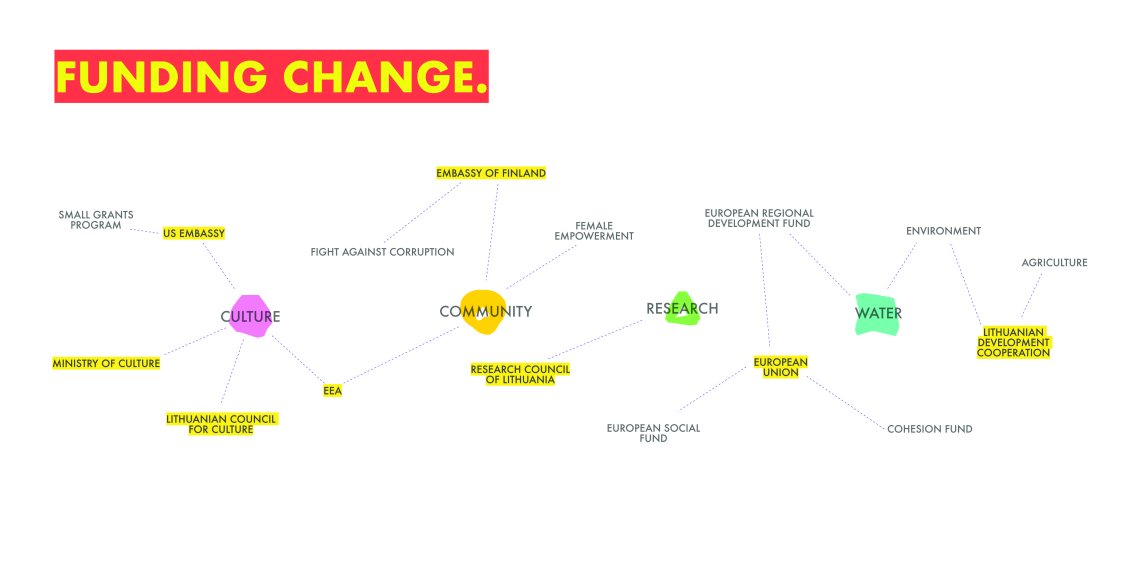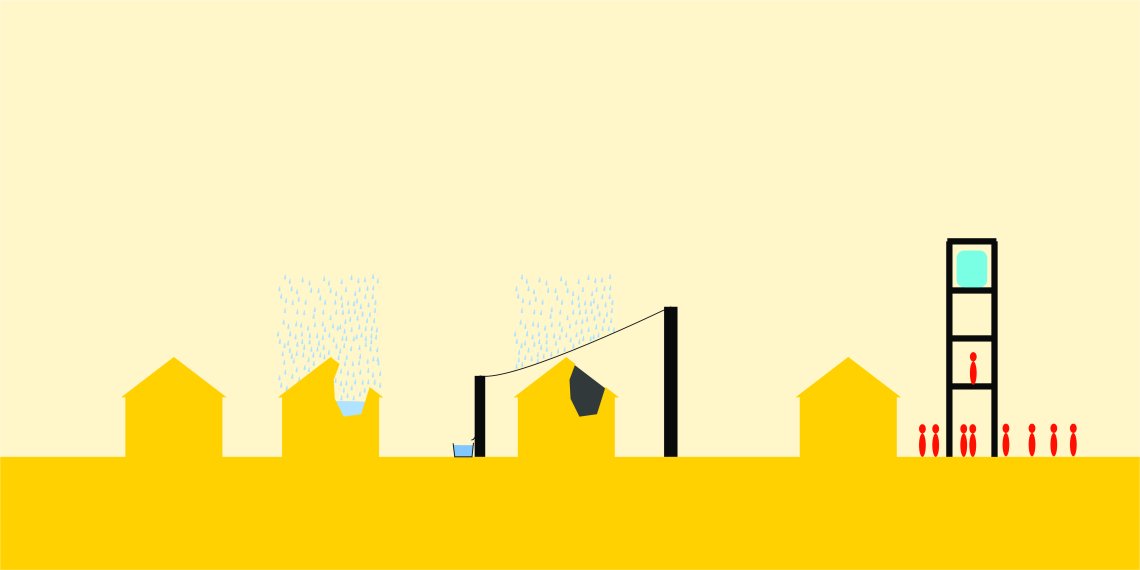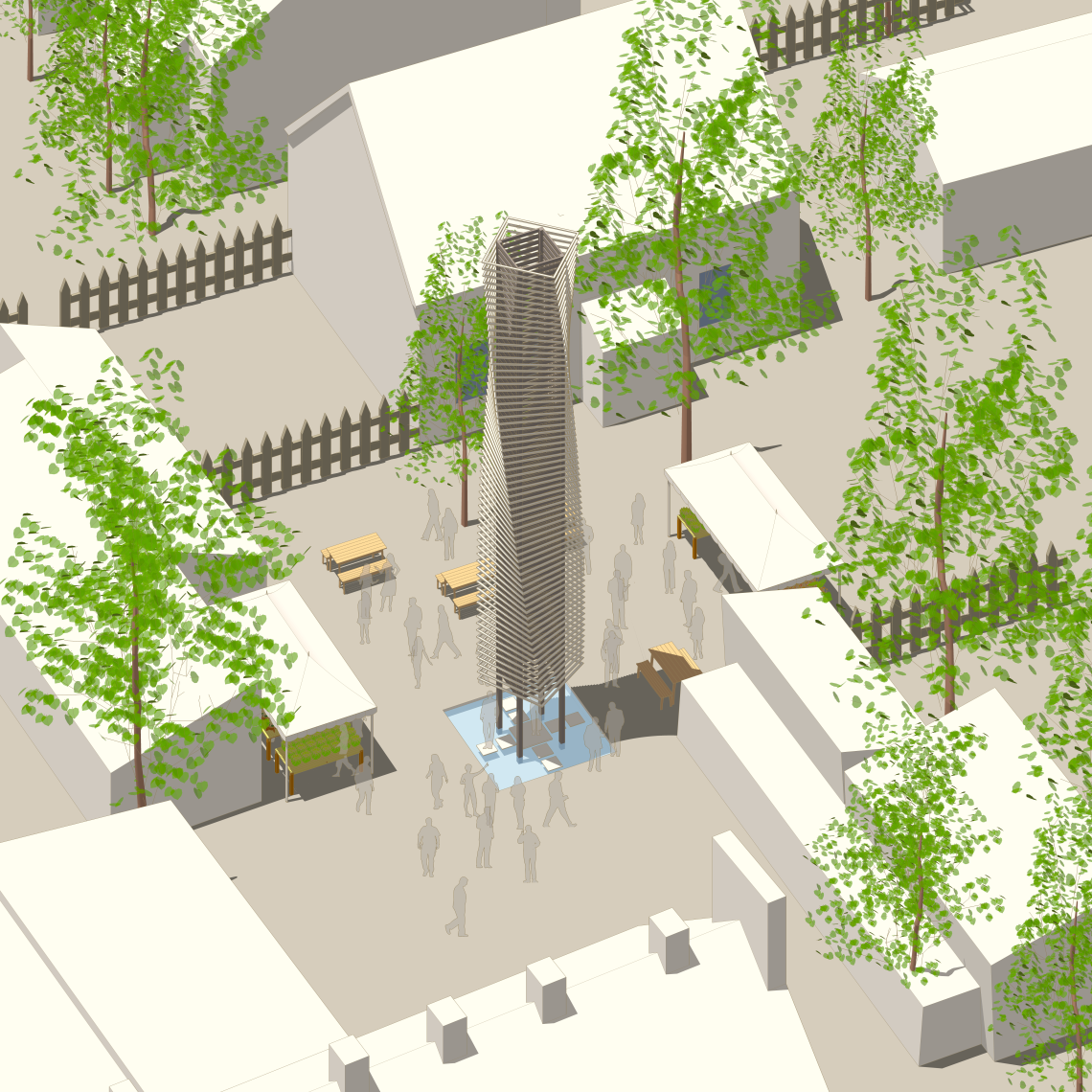Short Overview
The project “Breaking Limbo” looks into how a catastrophic event could become the catalyst for active intervention within Šnipiškės and between its residents. Based on a scenario that begins with the city of Vilnius experiencing non-stop heavy rain for several weeks, the timber shacks become useless in their function to keep it’s residents safe and dry. This leads to an emergency shelter taking space at Kalvariju indoor market. The grouping of residents at a time of need leads to conversations and anger for the neglect of basic infrastructure not provided by the municipality, specifically drainage and water. The constant stalling that has practically left them living out of a suitcase for generations sparks an identity crisis and questions raising the topic of identity and ownership.
Through contacts and aid, temporary interventions are put in place to buy more time to fix the homes while a plan is devised to break out of the waiting game and place their mark on their land to identify themselves as residents of Vilnius that are here to stay. Through the identification of past markers of shared outdoor communal space between the homes that has now become dead space, residents collaborate with third party skills to identify needs, funding methods and designs to grow at these markers.
For context, Šnipiškės began as a suburb of Vilnius but became incorporated into the urban fabric as the city expanded. It went through waves of the population and depopulation and after the depopulation during and after World War II the Soviet government used the houses as a reserve for the housing shortage. The intention being this was temporary and that the many families would be moved out soon as the area was to be completely re-developed, however this did not happen and by 1991 for the first time it became allowed to own private property and residents were now offered to buy the land yet large scale development plans were still on the table which added to the confusion of true ownership.
Over the next 25 years, much of the property is private and this is evident with the fences around the perimeters which did not exist before private ownership and was in fact a space between multiple houses to be shared for communal activities such as cooking, playing, eating etc.



Current Investigations
By identifying several marker points for intervention, I have further explored the direct context of the houses, trees, fences and people who revolve directly around the boundary cross point, this has led to designs depending of time within the scenario and funding type to shape towers that are disguised as functional water towers that provide water to the residents homes but also act as a space to gather and perform social interactions, gather tools and other utilities.

Gaps and Challenges
Scenario gaps: The scenario is relatively specific at it’s earliest stages of rain damage and quick problem solving however, as the nature of time and large scale development, the largest issue would revolve around keeping the momentum for development once the rain has passed
